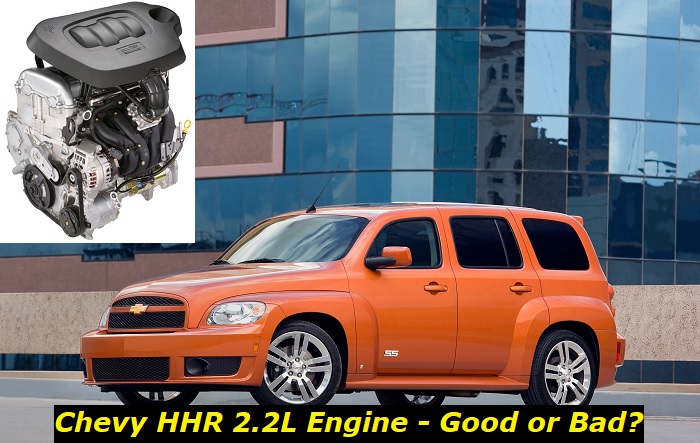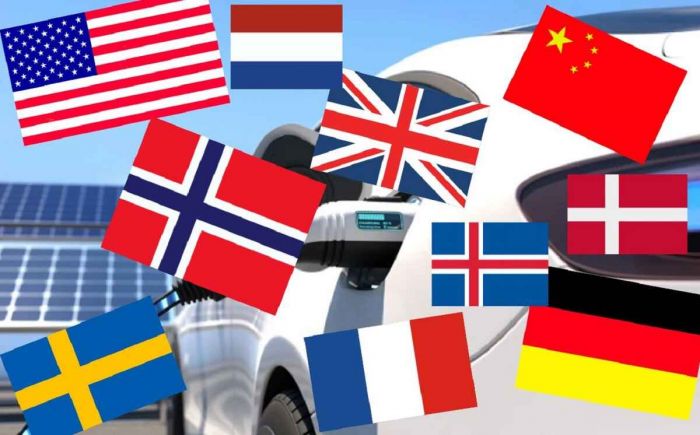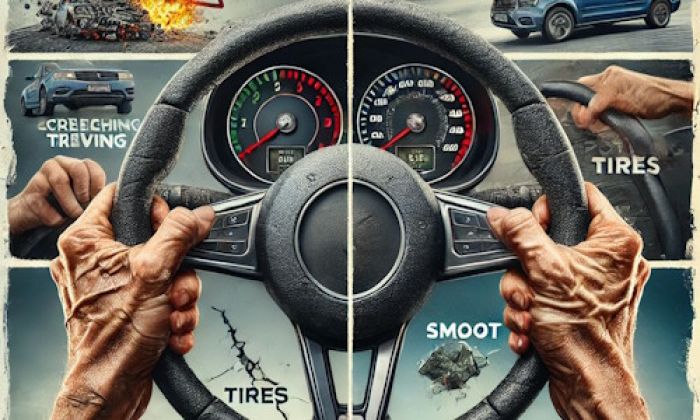The Chevrolet HHR is a five-door, five-passenger, front-wheel drive crossover with a retro design and a high roof. Bryan Nesbitt designed this vehicle, which was released by the American automobile manufacturer Chevrolet. The 2005 Los Angeles Auto Show was the venue of the launching of this model, which was introduced back then as a 2006 model.
The Pontiac G5, Chevrolet Cobalt, and Saturn Ion all share the GM Delta platform with the HHR. Commencing in 2007, Chevrolet also sold a panel van version of the HHR. The Chevrolet Captiva Sport, a repackaged version of the Opel Antara, modified the HHR in the United States. The Captiva Sport, on the other hand, was only obtainable as a fleet vehicle and was not available for order to the general public.

The design of the vehicle was inspired by late-1940s/early 1950s Chevrolet autos and trucks. Specific designs that the Chevy HRR followed were the Advance Design pickups and the 1947 Chevrolet Suburban, which both featured large, square bumper flares and a spherical fender.
Every year from 2006 to 2011, Chevrolet released the HHR engine in two variants, which are the 2.2L and the 2.4L. The pleasant, elegant, and cost-effective Chevy HHR maintains a higher proportion of the compact segment as it remained the people's choice of automobile. The HHR lineup's success is built on powerful and economical Ecotec engines that deliver decent performance, quality, and accessibility.
Key features and my opinion about the engine
- Production years:1999-2008
- Average lifespan of EcoTec L61:190,000-220,000 miles
- Fuel supply type:port injection
- Power range:135-145 hp
- Fuel efficiency:average
- Engine block material:aluminum
- Engine reliability score:medium
- The most common problems:chain tensioner failure, weak timing chain, a lot of oil leaks, weak engine head, minor issues.
Longevity of the 2006-2011 Chevrolet HHR 2.2L Engine
With proper care and maintenance, many users of the Chevrolet HRR shared that the 2.2L engine can last up to 200,000 miles. To achieve this mileage, basic maintenance, like doing a change of oil every three months or so, is encouraged, like with other automobiles. This means that depending on the kind of road you frequently drive, and the HRR must change the oil every 3,000 to 5,000 miles of travel.
Many Chevrolet HHR owners believe that after many years of driving the car, the engine is the last thing to worry about the auto's components. The 2.2L L61 engine is serviceable and works as if it's a brand-new thing, even after thousands of miles of driving. All varieties from 2006 to 2011 have incredible longevity and can give any engine of any car a run for its money.
Another impressive thing about the Chevrolet HHR is its durability. The 2.2L is very easy to maintain and, unlike other engines, wouldn't require frequent servicing, which could cost a fortune. This advantage is something every person looking into buying a car should explore. Not all engines have this kind of quality, and some even show different issues just months after purchase, like leaky water pumps and other engine problems.
Specs and Features of the 2006-2011 Chevrolet HHR 2.2L Engine
The 2006-2011 models of the Chevrolet HHR 2.2L all utilized the Ecotec L61 engine. The Ecotec engine has a DOHC 4-valve design with a cast aluminum block and head designed for displacements ranging from 1.8 to 2.4 L. The Ecotec 2.2 L61 was the premiere engine in the Ecotec Gen I roster, debuting in May 1999, and became the staple engine of the Chevrolet HHR.
In other countries, including Great Britain, Australia, and some European territories, the Ecotec L61 engine is known as a Z22SE. In 2000, the basic Family II design was significantly reconfigured to become the Ecotec Gen I. The L61 engine was built for smoothness, as opposed to its prominently harsh previous model. Its design included a power-steering pump mounted directly to the crankcase and dual in-block balance shafts.
The intake camshaft was cast into the block, as was the water-pump housing, while the A/C turbine and inverter were typically mounted on the component without frames. The oil filter cover was set into the block and featured a removable cover and changeable paper portion. The L61 engine had no EGR valve.
The L61 is a 2.2 L version of the Saturn LS1 Series with an 86 mm bore and 94.6 mm stroke. In the Chevrolet HHR, the horsepower is at 149 hp or 111 kW, with the exception of the 2006 release, whose horsepower is only at 143 bhp or 107 kW. The torque of the 2006 HHR 2.2 L engine is at 150 lb-ft, while the succeeding 2007 to 2011 models were made uniform at 152 lb-ft.
The Chevrolet HHR 2.2 L engine is a straight-four or inline-four engine, which is a four-cylinder piston engine with cylinders organized in a line along a common crankshaft. A straight-four engine has only one cylinder head, as opposed to V6 counterparts.
The 2.2L L61 engine got substantial internal upgrades in 2007, including a stronger Gen II block. Other upgrades included a reworked cylinder head, where the exhaust ports were enlarged, and an improved exhaust valve duration in the camshaft design. In addition, the engine went to individual coil-on-plug ignition from wasted spark ignition as the enhanced engine was managed by a new 32-bit ECM.
In 2009, Flex Fuel became the latest addition to the 2.2 L engine. The Variable Valve Timing also worked with the engine. In terms of fuel economy, the consumption of the HHR never changed from 2006 to 2011. The average combined EPA was 23 MPG.
Common Problems with the 2006-2011 Chevrolet HHR 2.2L L61 Engine
The L61 engine code was used for the majority of 2.2L engines, though there were a few variants, such as the LAP, Z22YH, LE8, and L4. The L42 was a natural gas edition of the L61, and the Z22YH was a direct injection subset that was distributed in the international market. The Chevrolet HRR was one of the first and most famous models to have used this engine during its mass distribution from 2006 to 2011.
- Timing Chain Failure
A timing chain controls the inflow and outflow of the engine's intake and exhaust vents. The timing chain fastener on the 2.2 Ecotec frequently fails because early versions had a technical fault that induced the timing chain tensioners not to obtain sufficient oil at idle. When insufficient oil is delivered, the tensioners are deprived of lubrication, resulting in increased friction and heat generation, resulting in the failure of the tensioners.
On the 2.2L engines, the timing chain tensioner is commonly the source of the problem. When tensioners fail, they mean additional slack throughout the chain, resulting in a loose chain. When the timing chain becomes loose, it may "jump gears," throwing the engine's timing out of whack.
- Leaking gaskets
When air reaches the engine, it passes through the intake air filter, intake manifold, and intake piping. The intake manifold gets air from the intake system and disseminates it evenly to each of the 2.2 Ecotec's four cylinders. The manifold is constructed of thick polycarbonate and bolts straight to the engine block's intake ports.
In contrast to conventional one-piece manifold gaskets, the 2.2 Ecotec utilizes individual gaskets for every cylinder. The gaskets have always been circular in shape and made from rubber, and like every gasket, they will eventually fail due to constant deterioration and use.
Gaskets are exposed to a great deal of pressure, amplitude, and heat, but the gaskets on the HRR 2.2L screw up more often. Symptoms of a bad intake manifold system include lack of acceleration and/or power, rough idling or misfiring, and the presence of a milky-looking liquid in the oil cap of the engine.
- High maintenance with increasing mileage
While not a common issue, it's worth mentioning general maintenance items as vehicles like the Chevrolet HRR age and accumulates more miles. Other maintenance elements like oil leaks, limited airflow, and the presence of metal shavings in oil are likely to surface after you reach 150,000 miles. While the 2.2L engine and transmission are extremely powerful, you should expect several problems with various support networks.
Water pumps, H\hoses, O2 sensors, power steering systems, spark plugs, and other components are frequently replaced as part of regular maintenance to keep the car running for thousands of miles. Furthermore, outside of engine issues, cars with the 2.2 Ecotec, such as the Chevrolet HRR, are identified to have relatively weak front ends. This problem can necessitate a significant amount of maintenance on the shocks, end links, ball joints, and other front suspension parts.
Conclusion
Beyond the general maintenance components, once the engine achieves extremely high mileage, the Chevrolet HRR 2.2L EcoTec L61 models from 2006 to 2011 didn't have major problems. The engine block and transmission, internals, head, and other items are all very strong and will endure the engine's lifetime. When issues arise, they usually involve ancillary engine mechanisms and front suspension parts, which are simple to repair.
About the authors
The CarAraC research team is composed of seasoned auto mechanics and automotive industry professionals, including individuals with advanced degrees and certifications in their field. Our team members boast prestigious credentials, reflecting their extensive knowledge and skills. These qualifications include: IMI: Institute of the Motor Industry, ASE-Certified Master Automobile Technicians; Coventry University, Graduate of MA in Automotive Journalism; Politecnico di Torino, Italy, MS Automotive Engineering; Ss. Cyril and Methodius University in Skopje, Mechanical University in Skopje; TOC Automotive College; DHA Suffa University, Department of Mechanical Engineering





Add comment